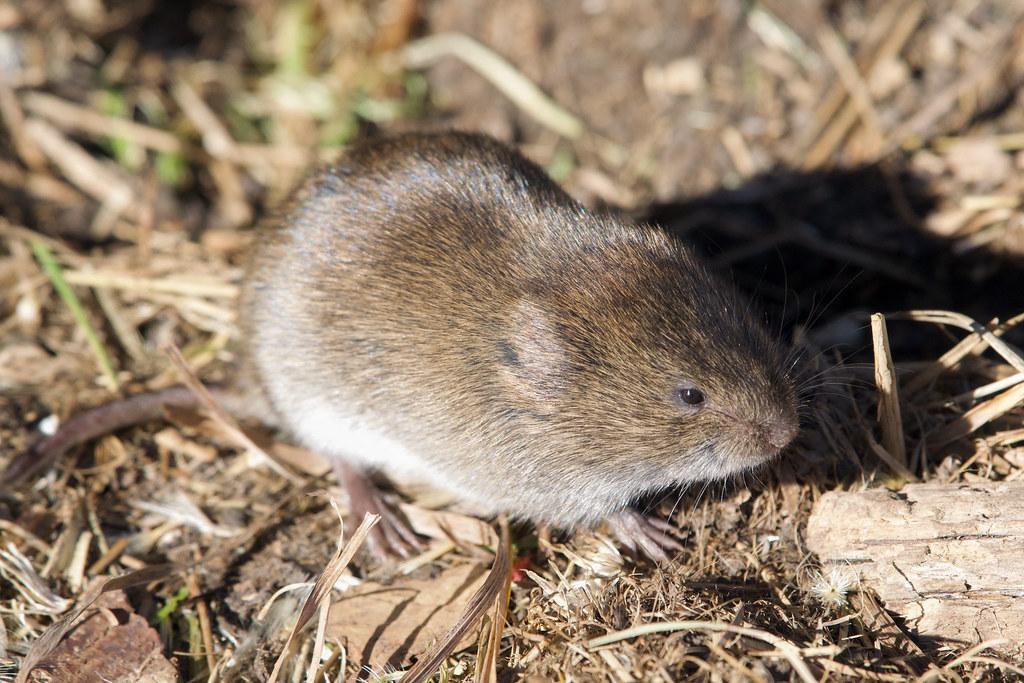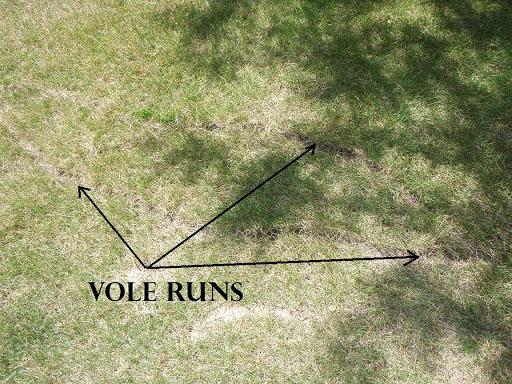Voles are small rodents that measure 4-8 inches long and range in color from brown to gray. In Alaska we had northern red-backed voles which are also found in Canada, Scandinavia, and northern Russia. They are sometimes referred to as Meadow Mice and their Latin name is Microtus pennsylvanicus. “Microtus” translates to “small ear”. They are pudgy with blunt faces, small eyes and ears, short legs and a short tail. Vole numbers fluctuate from year to year and their populations can increase rapidly. They can breed anytime of the year, but they typically breed in the Spring. They are extremely prolific. Female voles mature in 35 to 40 days, have 5 to 10 litters a year with 3 to 6 young per litter.
 If you have turf, fruit trees, a home garden, grow crops commercially, and generally care about your landscape, you should be alert for the presence of voles. They are herbivorous and feed on grasses, bulbs, tubers, tree bark, and tree roots. They are active year-round, day and night. A sure sign of voles “occupying an area” is their runways that connect numerous shallow borrows. They don’t like to be seen and make their nest underground in dense vegetation and grasses and under snow in the winter.
If you have turf, fruit trees, a home garden, grow crops commercially, and generally care about your landscape, you should be alert for the presence of voles. They are herbivorous and feed on grasses, bulbs, tubers, tree bark, and tree roots. They are active year-round, day and night. A sure sign of voles “occupying an area” is their runways that connect numerous shallow borrows. They don’t like to be seen and make their nest underground in dense vegetation and grasses and under snow in the winter.

It is best to mitigate vole population by use of a number of “management methods”. One of the easiest ways to do this is to make your area less inviting. You can do this by removing weeds, heavy mulch and dense vegetative cover. This removes food sources, cover from predators, and makes it more challenging for them to connect trails. This is generally referred to as “habitat modification”.
You can also try fencing areas and adding approximately 12” of small mesh size (1/4” or smaller) to the bottom of the fencing However, you would also need to bury the fence below the ground for 6-10” as voles tunnel.
Protect young trees from girdling (removing the bark near the base) by using cylinders of metal, plastic, or hardware cloth and surrounding the trunk. However, you also need to allow for tree growth and, again, remember to bury the cylinder below ground.
If the voles have not “totally taken over the area” trapping can be effective. A simple mouse trap baited with peanut butter has been successful. Do not handle a caught vole w/o gloves as they do carry infectious pathogens and/or parasites. Also, be sure to keep small children and pets out of the areas where you have traps set.
Finally, if you have a large area to eradicate and trapping will not be effective, there are two toxicants, zinc phosphide and anti-coagulants that are considered lethal control. Please note, these are not recommended for residential areas.
Bottom line, voles are generally pest. However, ask a predator such as a coyote, fox, snake, owl or hawk and they would say they are beneficial!







